2015 City Council Candidate Survey
There is a city election coming up. Richardson residents must choose the office holders for City Council. The election will be held on May 9, 2015, but early voting will start on April 27, 2015.
As an advocacy group, Bike Friendly Richardson does not have any official endorsement for any of the candidates. However, as Richardson residents who bike, we were concerned about each candidate’s position on bicycling issues. We sent each a questionnaire covering several bicycling topics, and many of them sent in their responses. We will post those responses on our blog so that people who bike in Richardson can have a perspective of who they are voting for. Don’t forget to vote!
Here’s a link to the List of Candidates
In this post, we will hear from Rick Wilder and Bob Townsend, who are competing for Place 1, and Mabel Simpson (running against Claudia Tatum for Place 4); as well as unopposed candidates Paul Voelker (Place 5), and Scott Dunn (Place 3). Thank you for your thoughtful participation in our survey.
EDITED TO ADD: Claudia Tatum and Mark Solomon’s responses appear below.
EDITED TO ADD: Steve Mitchell’s responses have been added below. Steve explained in an email that he is in the tax business, and now that tax season is over, he was able to respond to the questions.
THANK YOU to all Council members and new Candidates!
First, Rick Wilder ultimately decided not to fill out the survey, but he did send this response and gave permission for us to post it:
I am sorry I have taken so long to respond to you.
I have looked at each and every question on your form. An answer to some of them would take some research to really answer well.
I have decided not to fill out the form, instead, should I win the election, I would work with BFR and its members to address the most serious ones by forming a volunteer committee and take a comprehensive approach to improving the cycling experience.
I have both a mountain bike and a street bike and enjoy both on road and off road cycling. I value bikers safety as I have been run down by a car while cycling with my son.
If you want to post something on the blog, encourage your members to attend the LWV forum April 14 at the civic center (7pm) and ask the questions then.
They are also welcome to attend the Duckcreek HOA meeting on April 16 at Dartmouth Elementary and ask questions also. I welcome one on one and group meetings anytime I am asked.
Thank you,
Rick Wilder
P.S. Should I not win the election, there is no reason we cannot form a group to address the issues and press the city council for positive action.
Community involvement is what it takes to make changes. It is our city.
Here are the survey questions, and below each question are the responses from Bob Townsend, Mabel Simpson, Claudia Tatum, Paul Voelker, and Scott Dunn.
- For each of the following transportation modes, when was the last time you used it in Richardson, where did you go, and what was your experience:
a. Bicycling
b. Public transit
c. Walking (more than two blocks)
BOB TOWNSEND: Bicycling – Never
Public Transit – October, 2014 – Excellent experience
Walking (more than two blocks) – March, 2015 – No problems
MABEL SIMPSON: Bicycling – The last time I was out bicycling was an outing at UTD and it was great.
Public Transit – The last time I used public transportation (i.e.: train or bus) was for a volleyball competition. I felt that it was a good experience and the bus was clean.
Walking (more than two blocks) – I frequently walk the trails east on Renner. I thoroughly enjoy walking around Richardson neighborhoods.
CLAUDIA TATUM: a. Bicycling – I have not biked in Richardson. I do love bicycling, though. I used to bike and run often with my lovely dog Nikki.
b. Public transit- I have not used public transportation in Richardson. I used it often when I was a college student. I think it is a great, affordable option for our students, younger generation, and those who want to save gasoline (e.g. save the environment).
c. Walking (more than two blocks)- When I first moved to Richardson, I would walk to the store instead of driving. It is a great way to exercise, sightsee and enjoy a beautiful sunny day.
PAUL VOELKER: a. Last week, Breckinridge Park, great time to spend with my son. I love the trails.
b. It has been a year, DART train to the Dallas zoo. Great people watching.
c. At least twice a week, Breckinridge Park, “me time”. My son and I will go deeper into the woods monthly.
SCOTT DUNN: Bicycling – I was just given a bike. It is currently getting tuned-up. Once it is complete, I expect to use it for exercise and leisure with my wife on the bike trails throughout Richardson.
Public transit – I take DART rail just about anytime I attend events in downtown Dallas usually to American Airlines Center for a Mavs or Stars game.
Walking (more than two blocks) – I am the course chairman for RHS/PHS Excellent in Education 5K run. Before and during the race I walk the course and around Richardson High School to make sure everything is safe for the participants.
MARK SOLOMON: a. Bicycling No not cycle would like to but not enough time in the day. b. Public transit about two months ago went to Mockingbird Station. c. Walking (more than two blocks) about once a month around the neighborhood with the dog.
STEVE MITCHELL: a. Bicycling >> two weeks ago b. Public transit >> one week ago
c. Walking (more than two blocks) >> two days ago
- What are the City’s most urgent transportation needs? How would you address them?
BOB TOWNSEND: The most urgent transportation need is the redevelopment of US 75/Central Expressway. We are working with TxDOT to insure that the redevelopment addresses all the interests of Richardson’s residents and businesses, including safe crossing locations for cyclists and pedestrians.
MABEL SIMPSON: I feel that traffic and density analyses are constant in any city with growth as we have experienced. I am also a huge proponent of the Cotton Belt train line to DFW Airport, which will require review for proposed solutions.
CLAUDIA TATUM: We are currently facing traffic challenges around the Methodist Richardson Medical Center. The new challenges would be on US-75 and Central Expressway. We need to continue the partnership with TxDOT and local cities in order to insure a reasonable commute time for our citizens working in Richardson.
PAUL VOELKER: Keeping the commute times for our citizens and employees that work in Richardson reasonable. This can be accomplished by assuring traffic studies are completed and are considered under both the individual plan being approved and the broader needs of the city.
Staying on top of the plans from our transportation partners like TxDOT, NTTA and DART. The council has an active role in working with and informing these groups of our wishes and needs. Access to and though this city is critical to our overall planning. I support the US 75 document sent to TxDOT by council this year with specific request keeping Central a commuter friendly highway not an interstate. I support the widening of the George Bush Toll Road and the study to enhance the intersection between Bush and 75 to allow easier access in all directions. I support adding additional capacity through lengthening the DART train stations to allow up to three cars. I also continue to fight for bring in the timeline on the CottonBelt.
SCOTT DUNN: Richardson’s daytime population far exceeds its resident population. So, the most urgent transportation need is to get the residents from their homes to their places of work. We as city leaders need to encourage the use of bikes and public transportation.
I also want to explore an idea with the city and regional transportation experts to make the right-most lanes on some collector streets bike and bus traffic only. Whereas the common practice as the Metroplex grows in population is to increase the number of lanes on collector streets, what would happen if we reduce the number of automobile lanes on some collector streets? This could discourage cut-through traffic from other cities and encourage more bus and bicycle use.
MARK SOLOMON: The Council over the past several years has spent a great deal of time working on transportation related topics including light rail, bike lanes, US 75, Bush, our major through streets as well as the interior neighborhood streets. Our interior streets are in my opinion the ones that we need to concentrate on in this upcoming budget cycle. We have addressed Beltline, Arapaho, Campbell and we are now working on Renner. Spring Valley is in the final design stages and hopefully will be under contract later this year for a major re-do from Weathered to Coit Road.
STEVE MITCHELL: Connectivity. The ability for those who live or work in Richardson to be able to move through and within our city either by car, bicycle, or by foot is critical. To achieve this goal, we must continue to improve our major thoroughfares and better synchronize our traffic signals to reflect traffic patterns; we must continue to dedicate more of our roadways to bicycle lanes; and enhance and connect our trail systems.
- What street in your district do you feel is in greatest need of a “Complete Street” overhaul and what would you specifically change? (Complete Streets, also known as “livable” streets, are streets designed for everyone. They provide safe access for all users, regardless of age or mode of transportation. Pedestrians, bicyclists, motorists, and public transportation users of all ages and abilities should be able to safely move along and across a complete street.)
BOB TOWNSEND: It’s a tie between Centennial Blvd. and East Belt Line Rd.
MABEL SIMPSON: Due to the age of some of our city streets this is a new concept and the older segments of our city need addressing with a focus on signaled streets.
CLAUDIA TATUM: East Belt Line Road.
PAUL VOELKER: As an at large councilman, I will pick the one that I believe should get our immediate attention. East Belt Line Road in support of our recently approve rezoning plan for that area could bring high value from US 75 to the neighborhoods to the east. Allowing better access for cars, bikes and pedestrians.
SCOTT DUNN: The City’s policy is to use bike lanes on streets with boulevards. Waterview is an excellent example of a “Complete Street.” The boulevards add the safety needed for all who use the “Complete Street”. If the City wanted to remove the safety factor of the boulevards, which I am not in favor of, there are no other streets within Place 3 with boulevards to use. Whereas Waterview Drive does not include a Dart bus route, its cross streets do.
MARK SOLOMON: Collins Blvd. We recently added bike lanes on Collins and it has greatly aided in the calming of traffic on this busy residential street. I am hopeful that along Collins on the west side of Plano Road we can do come more enhancements to the Streetscape by improving the medians and several areas of public right way. There will be a new pocket park and trail extension at Collins and Alma by the end of the year. On the west side of Collins, as that area continues grow, we will need to see what can be done to make it more bike and pedestrian freely. There are several major sections of East Collins especially at Jupiter that need to be completely redone.
STEVE MITCHELL: The parts of Waterview Pkwy which currently do not have bicycle lanes or sidewalks. From Spring Valley Rd, this street travels north, connecting with Independence Pkwy in Plano. This street would be an ideal candidate for a ‘complete street’ as it would provide connectivity to and through a number of cities to the north.
- How will you leverage the re-development activity in Richardson such as the CityLine development, Heights shopping center growth, West Spring Valley Corridor, and the Main / Central redevelopment ordinance area, to enhance the walkability and bike-ability in those areas and contribute to resident quality of life?
BOB TOWNSEND: The City Council addresses the issues of walkability and bike-ability (including bike parking) in every zoning request that is presented. We have been successful especially in the City Line development. The Heights Shopping Center is more of a challenge since it was already developed. Walkability and bike-ability are addressed in the Planned Development plans for West Spring Valley Corridor and Main/Central Redevelopment ordinances but, of course, neither of those have been implemented yet.
MABEL SIMPSON: No response.
CLAUDIA TATUM: The redevelopment initiatives for West Spring Valley Corridor and Main- Central are pedestrian and bike-friendly. We have the redevelopment plans, but they have not been given the priority necessary to implement them.
PAUL VOELKER: We review each development to assure that these amenities are considered and I believe we have made great strides.
SCOTT DUNN: With the latest rezoning we did for Main Street, Central Place, Interurban and Chinatown we included many amenities for walk and bike-abilities. These included bike racks, bike lanes and enhancements for sidewalks. We have also made sure to include these amenities when we hear rezone or variance cases. I will make sure we continue to do this when hearing the cases that come before us.
MARK SOLOMON: Yes, as each development comes before Council I have been very attentive to making them as bike friendly as possible. This has been more successful in some than others but is always an issue to be raised. I am seeing more of the developers addressing this in their plans as we create more dense livable areas. It is in in their best interest as well as the City’s do provide this for their residents.
STEVE MITCHELL: When these areas are developed or redeveloped, the city should encourage walkability and bike-ability either as a component of the planned development or as a part of any incentive packages that might be offered to developers. Providing a way to access to these areas by foot or by bicycle reduces congestion and gets more cars off the road.
- How will you address the lack of safe crossing locations for cyclists and pedestrians in the southern part of the US-75 corridor between Spring Valley and Arapaho?
BOB TOWNSEND: See 2 above.
MABEL SIMPSON: I would need to know why it is unsafe or why it is referenced as “lack” of safe crossings.
CLAUDIA TATUM: We need to maintain a partnership with TxDOT in order to convey our needs.
PAUL VOELKER: As plans come forward on redevelopment of this area we will need to assure that things like bump outs for easier crossing and other access friendly aspects are utilized.
SCOTT DUNN: TxDOT is currently studying how to expand US75 through Richardson. This Council has made it very clear to them our requirements. First, the expansion cannot be elevated. Second, it cannot be widened. And third, it must include an east/west pedestrian / cyclists crossing.
MARK SOLOMON: In the planning for Spring Valley we did look at some plans for improving the walkability and biking in that area. The same is true for Arapaho. As TXDOT continues to look at this section of US75 I am sure the Council, as we have done already, will champion the walkability of these crossings.
STEVE MITCHELL: We need to evaluate these lack to safe crossing locations to determine what needs to be done, what resources are needed, then identify funding sources – with the goal of making them safe. The city should partner with TxDOT or other regional partners to address these deficiencies.
- How can community groups and businesses like Bike Friendly Richardson, Richardson Bike Mart, and interested Neighborhood Associations best partner with the City to offer input and share knowledge, and collaborate on items of interest to people who bike in Richardson?
BOB TOWNSEND: Any group is welcome to address the City Council on any Monday night. All of us are in frequent contact with Richardson Bike Mart and Jim and Rhonda often give us their thoughts on various issues. There is a monthly meeting with the presidents of all of the neighborhood associations in the City, City staff and the City Council members so they have ample opportunity to offer their input. Interested organizations should appear at the public hearing for any zoning request and express their opinions. These public hearings are always on Monday nights and the agenda is posted on the prior Friday on the City’s website (cor.net).
MABEL SIMPSON: Such community groups could review City Council agendas posted every Friday and review the zoning applications and then attend City Council Work Sessions and City Council Meetings to offer their input on these relevant issues. This way, city groups and businesses can share their expert knowledge to the Council in these areas so decisions made are done so with the best information available.
CLAUDIA TATUM: I would encourage the community groups to voice their opinions, wants, and needs by attending the weekly City Council meetings. I would also encourage them to reach out to their City Council representative; call, e-mail and request to meet with their council men/women.
PAUL VOELKER: The City of Richardson offers a wide variety of methods to give input ranging from, e-mail, web sites, HOA presidents meetings and workshops and individuals and groups are always welcome to visit both the City Planning Commission and City Council meeting as part of a formal agenda item or by utilizing the visitors section.
SCOTT DUNN: The best way is always to communicate. I believe we have a very good line of communication between these groups now. I would like to see it continue.
MARK SOLOMON: I think we are doing a pretty good now of reaching out to the interested parties. As the plans for US 75 continue to mature those interested should attend and participate in the public hearings, the same with zoning cases that come before the City Planning Commission and City Council. Those participating should become well versed in all the options that are available and make a reasoned and well thought out presentation when participating in these forums. I am always willing to visit with anyone regarding this or any other issue of concern to the residents.
STEVE MITCHELL: Communicate your interests and ideas to your city council members and city staff. The council is focused on opening up more bicycle lanes in our city, and your input is needed.
- Forty years ago over 60% of school children in the United States walked or rode a bicycle to school. Today, that figure is less than 10%. This decline in bicycling and walking has been mirrored by dramatic increases in childhood obesity. What can the City Council can do to support the environment and public health by making it easier for local children to once again walk and bike to school?
BOB TOWNSEND: This is difficult in today’s environment where parents are afraid to let their children walk. There have been so many incidents where children were threatened. Richardson has participated in the federal government’s safe routes sidewalk and pedestrian-friendly walkways program which makes it easier for children to walk and bike to school.
MABEL SIMPSON: I think the city does a good job regarding environment protection and public health. Personal accountability is where I would direct anything related to childhood obesity to family practices outside of the government. This is dictated more by parents protecting their children with regard to their safety. If legislation would allow penalties that moved these people with limited appeal rights, things would change.
CLAUDIA TATUM: I think we could partner with the local school districts, police department and local bicycle clubs in order to bring awareness to our current programs and find ways to promote cycling and safe walking to school. It would require a joint effort in order to promote safety by enforcing traffic violations (school zone speed limit signs, no U-Turns in school zones, etc.) and promoting cycling and walking.
PAUL VOELKER: The city has many programs to create awareness and to educate both our children and parents on how best to use a bicycle. See the link below. We are always looking for funding opportunities from various sources to support these programs and I plan to continue these efforts. https://www.cor.net/index.aspx?page=1320
SCOTT DUNN: The City can work with the School Districts to make sure the routes the children use to / from schools are safe. I would like to see groups like Bike Friendly Richardson work with the schools to help show the benefits of cycling.
MARK SOLOMON: The City has and is spending thousands of dollars to improve our sidewalks to make them accessable to all students so they can have a safe route to their schools. This has helped but the modern culture is the biggest problem not the lack of good routes. Parents do not want their children walking home. I would strongly encourage those interested in cycling to work with the PISD and RISD to hold bike safety rodeo’s or other public awareness programs that would encourage students and familes to walk or ride to school.
STEVE MITCHELL: Providing dedicate bicycle lanes or even paths that lead directly to schools. If the school is on a residential street rather than on a feeder or arterial, then you could evaluate whether sections of residential streets could be dedicated to bicycles during school hours. Our paramount concern is the safety of our children. If parents know that their children have a safe path – that doesn’t complete with cars – to school, then they may be more likely to allow their children to ride their bicycles.
- Several cities in the US, including Boulder, CO; Kansas City, MO; and Fort Worth, TX; have implemented ordinances that require and/or incentivize the installation of bicycle parking as part of new commercial and multifamily construction or major renovation. How would you increase the amount of secure bicycle parking throughout the City during the upcoming Council term?
BOB TOWNSEND: We have required bicycle parking on a case-to-case basis during the zoning process.
We will look at the practicality of implementing an ordinance that specifies the bicycle parking requirements for each type of development or redevelopment.
MABEL SIMPSON: If the development code addresses this, no ordinance is necessary. There does not need to be a law for everything, collaborative efforts are much more successful.
CLAUDIA TATUM: The City Council should be more proactive in reviewing and enforcing development plans with amenities to include bike racks as needed.
PAUL VOELKER: When we review development plans amenities of all types are considered and considerations are often given to developers based on the number of such amenities offered. I will work to make sure bicycle parking is on that list. I think that the city can be most effective when we demonstrate the use of these amenities on city owned properties.
SCOTT DUNN: We will continue on a case by case approach to work with the developers to make sure they address the need for bike racks. I will also encourage these developers to incorporate the City’s new Culture Art Master Plan for the amenities they add.
MARK SOLOMON: As each case comes before the Council this issue is addressed. I believe that, as I sated earlier, the developers are seeing the public demand for this amenity and as such are addressing it before it even comes to us. Developers and others are seeing that the way people travel is changing and they will adapt to this to make their places of business friendly to the public.
STEVE MITCHELL: We need to study the actions of these cities to determine what components might work best for us. We need to encourage the installation and use of proper types of bicycle racks that secure bicycles, similar to the ones at the Spring Valley DART station. When we approve sizeable ‘live’ or ‘work’ planned developments, we should look at making this a requirement.
- The City of Richardson Transportation and Park and Recreation Departments have plans to improve and extend the bicycle lane and trail network, including facilitating connections to our surrounding cities. How will you support continued implementation of the Richardson Bicycle Facilities Plan?
BOB TOWNSEND: I strongly support the bicycle lane and trail networks.
MABEL SIMPSON: There are currently 600 miles of Richardson City streets, 15 miles of which have bicycle lanes which is a great start that can continue with cyclists’ active involvement.
CLAUDIA TATUM: As funding permits, I would continue to support bicycle lanes and trails. The cyclist clubs that meet at the Starbucks on Custer and Renner and the cyclists touring our streets on Saturday mornings is an example of safe streets and well-planned bicycle lanes. Every time I see them bike on Custer heading east, I get inspired by their tenacity. It reminds me why cycling lanes are important. I will join their riding group one day 🙂
PAUL VOELKER: Continued build out of our trail system and coordination with other cities is critical and I will support these efforts.
SCOTT DUNN: As the funds become available I will continue to encourage the trails, bike lanes to be enhanced and extended.
MARK SOLOMON: I am strong supporter of our bike and trail program and will continue to advocate for the connectivity of these in our city and to our neighboring cities.
STEVE MITCHELL: Continue working with our city officials and officials from other cities and counties to complete missing trail and bicycle lanes. Connectivity is crucial.
- Four years ago the State Legislature overwhelmingly passed a safe passing law for vulnerable road users, including bicyclists, pedestrians, construction workers, etc. The Governor vetoed the bill. All of our neighboring states have safe-passing laws and several cities in Texas including Plano, Dallas, Fort Worth, Denton, San Antonio, Austin, New Braunfels, Edinburg, El Paso, Beaumont and Helotes have adopted safe passing ordinances. Would you support implementation of this type of ordinance for Richardson during the upcoming Council term?
BOB TOWNSEND: Yes.
MABEL SIMPSON: No, we must stop perpetuating the thinking that we need a rule or law for everything. We must return to citizen or personal accountability if there is an issue, pursue personal rights to promote citizen responsibility, not legislated everything.
CLAUDIA TATUM: I would be willing to consider it and would work with our surrounding cities, neighborhood associations, and police department in order to educate the public and continue to promote safety.
PAUL VOELKER: I would be willing to consider this action in coordination with our surrounding cities.
SCOTT DUNN: I like the idea, but believe cities should not pass ordinances that would give the cyclist a false sense of security when passing through one city to another city that does not have the same ordinance. A statewide law is best.
MARK SOLOMON: I am not certain that this is the best way to address this issue. Without a statewide rule I am not sure this would be a truly safe and enforceable action. All users of the public streets need to exercise reasonable caution.
STEVE MITCHELL: Bicyclists need to feel safe when they ride. This safety requirement is why we need to adopt some kind of local safe passing law, similar to Plano.
- Is there anything else you’d like to share with Richardson’s bicycling community?
BOB TOWNSEND: Richardson is a bicycle-friendly community and I will continue to work to make it more friendly.
MABEL SIMPSON: Please get out there and vote!
CLAUDIA TATUM: Richardson is a bicycle-friendly community. I will continue to promote partnerships with the school districts, police department, and neighborhood associations in order to promote a healthy lifestyle and safety programs by being active in the cities’ recreational programs (aquatics, athletics, community events, gymnastics center, parks and trails, recreation centers, corporate challenge, golf course, and tennis center). Visit the Parks and Recreation Homepage for more interesting activity programs for your family and community http://www.cor.net/index.aspx?page=15
PAUL VOELKER: I am always proud to see how many of our citizens use biking as an important part of their healthy life style and recreational activities.
SCOTT DUNN: I would encourage BFR to continue to work with the City.
MARK SOLOMON: Biking is a growing activity for all age groups and I will continue to be open and responsive to constructive proposals for Richardson residents to participate fully in this activity.
STEVE MITCHELL: Thank you for the impact that you continue to make in our community!














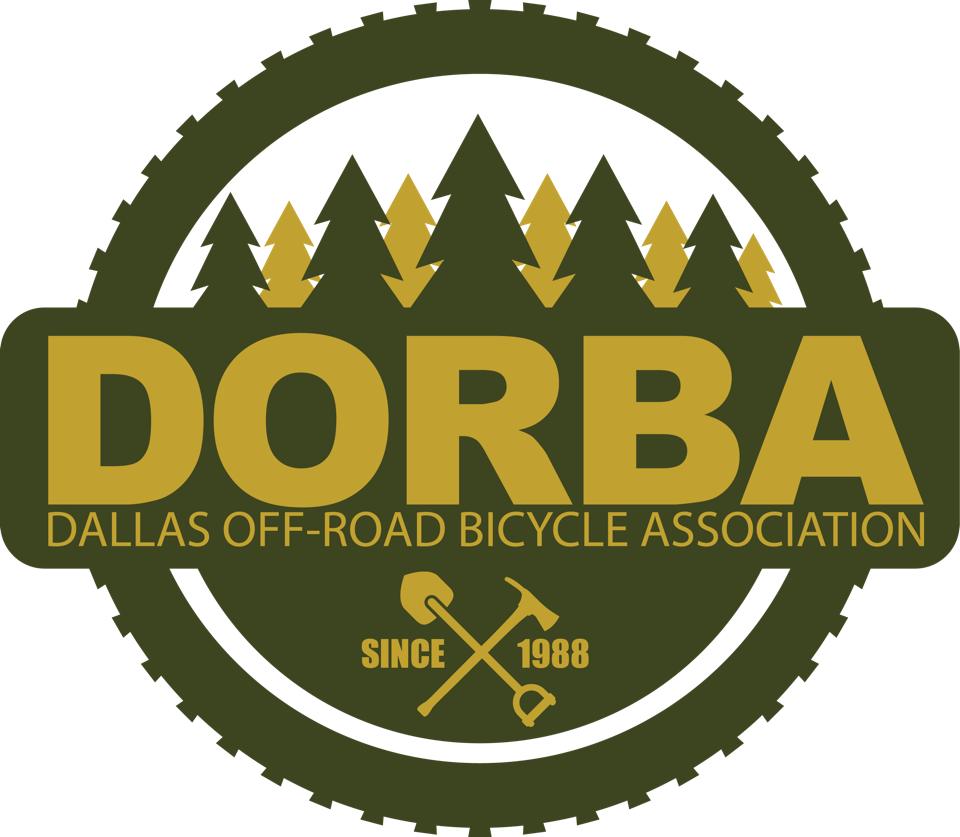








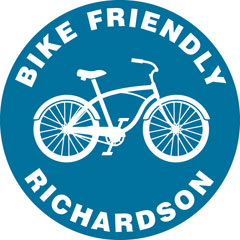


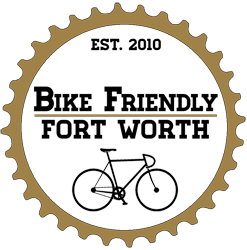







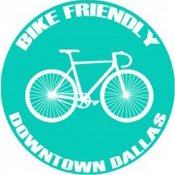

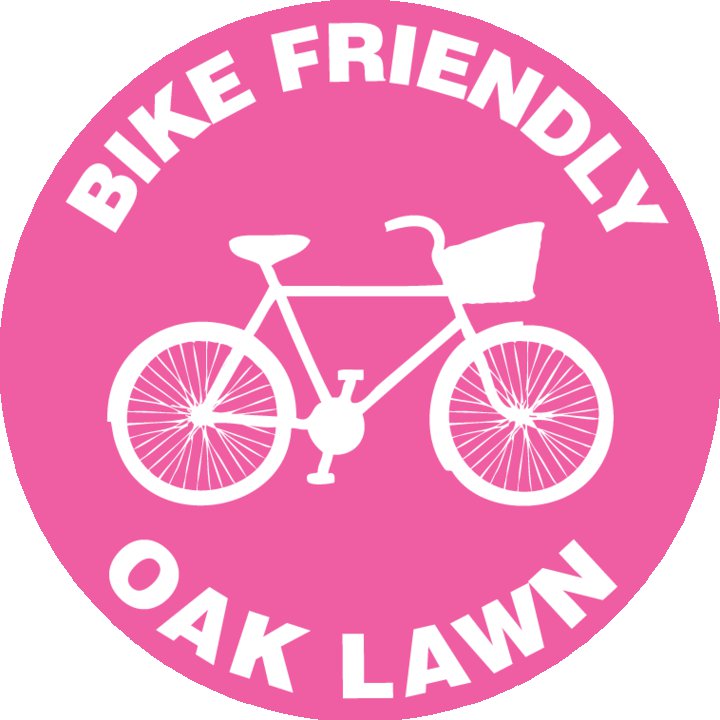











Comments Off on 2015 City Council Candidate Survey